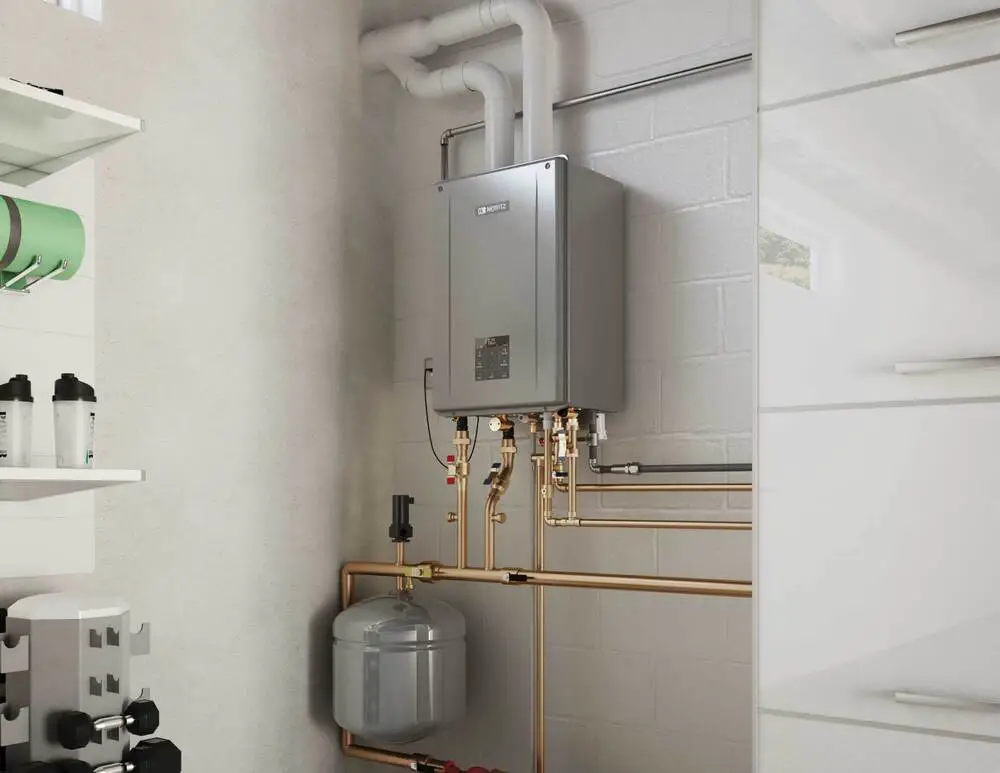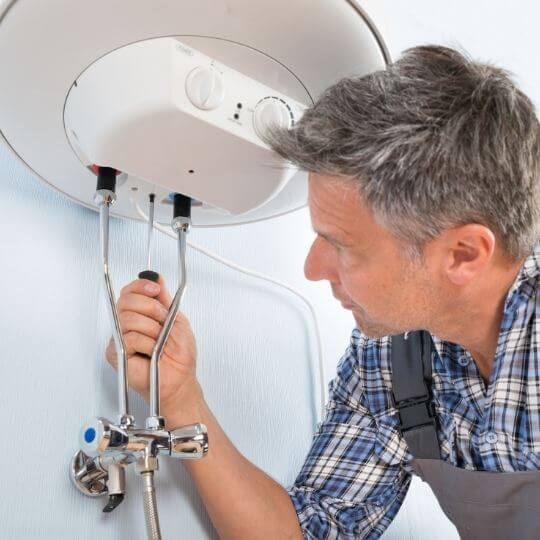Are you familiar with the Noritz tankless water heater problems?
Noritz builds high-quality tankless gas water heaters. Even if Japanese products are known as reliable, you may still run into some heating issues. The Noritz tankless system displays different error codes if there’s a problem that needs attention.
While it may still operate with codes showing, any error codes should be investigated immediately to avoid an even more costly repair later. Here are some common problems that you may see on your Noritz water heater.
Noritz Tankless Water Heater Problems and Solutions

- No hot water is coming out
Noritz tankless water heaters commonly encounter no hot water in the house but have cold water. To get to the root of the problem, you need to consider how many appliances you are running at once. [1]
If you’re running several appliances at once, chances are you’re just running your water heater to its limits. The flow rate capacity of a tankless water heater shows how much water can be used simultaneously. Choose which hot water activity you need right now, turn off the others, and restart your unit.
To overcome this problem of no hot water coming out, you can install two or more tankless water heaters, connected in parallel for simultaneous demands of hot water. You can also install separate tankless water heaters for appliances — such as a clothes washer or dishwater — that use a lot of hot water in your home.
- The water is too hot
Sometimes the heater experiences the reverse problem where the water coming out is too hot. Error Code 16 is displayed in this case. This usually indicates a problem with the temperature sensor.
Sediment build-up can be a potential issue as well. Cleaning the fixtures and flushing or descaling could be necessary in this case.
Related: How To Flush Tankless Water Heater
Possible fixes to apply if the water gets too hot include:
- Don’t overload the system with too many taps at a time.
- Set the thermostat to about 120 F.
- Adjust the temperature sensor for a more precise reading.
- Clean the inlet filter of the tankless water heater.
- Follow the instructions provided by the manufacturer.
- Clear any blockages again. A lack of water flow can cause heated water to become too hot.
A problem specific to electrically powered water heaters is a faulty heater element [2].
Electric water heaters are equipped with one or more heating elements. If a heating element begins to ground out, it will stay on all the time and overheat drastically.
The result will be very hot water. Over time, the heater element will be completely damaged. Then you’ll have no hot water at all until the element is replaced.
Related:
3. Mineral or Sediment Build-up in the Water Heater
Mineral or sediment buildup causes the water heater and the pipes to block partially or fully. Systems with iron plumbing and components experience rust, which leads to the accumulation of iron sediment. Meanwhile, homes with hard water could see minerals like calcium and magnesium resulting in a scale buildup [3].
Over time, these minerals and sediment can become stuck in place, leading to a gradually growing buildup that narrows the passage that the water moves through. This eventually affects the water temperature and pressure, making it potentially unsafe.
If you are experiencing problems related to sediment buildup, you’ll need to call a professional to flush your system. This should be a part of your regular annual maintenance to avoid more damaging issues caused by mineral or sediment buildup.
4. Hot or Cold Water Sandwich
A cold water sandwich effect refers to the phenomenon where the water from a heater is warm for a few minutes, then unloads a burst of cold water, and then the water quickly returns to being warm again [4].
This is a common problem with tankless water heaters. Some water remains stored in warm conditions at the mouth of the faucet or other outlets.
This means that when someone runs the tap or the shower, he will receive some hot water instantly. However, a tankless heater takes some time to heat the exchanger and during that time, some cold water may get through the exchanger and reach the user.
This issue is more common with electric water heaters than it is with gas-powered heaters. The reason for this is that gas reaches the operating temperature almost immediately, whereas electric heaters may take a minute or two to reach the required temperature for heating.
5. The water smells bad or looks discolored
Your water should always be clean and clear. If it’s discolored or smells bad, you might have something like mold, fungus, or bacteria growing inside your unit [6].
The most common bad smell you can pick out is that of “sulfur” or rotten eggs.
This smell is typically caused by sulfate bacteria that can develop within the system. This issue usually occurs when warm water is left too long in the system and bacteria build up in the water.
The soft water breaks down the magnesium and creates sulfate gas within the water heater.
The minerals in the water tend to build up in the unit over time. When enough builds up, you get cloudy, yellow, brown, nasty water. If you notice rusty or rust-colored water coming from your faucets, then you may have a buildup of rust or damaged piped within your unit.
Flushing your tankless water heater with a pre-made descaling solution or regular distilled white vinegar should solve your problem.
It’s good to be in the habit of cleaning your tankless water heater at least every six months. This is particularly important if you know you have hard water problems. If the rotten egg or bad smell is caused by stagnant water, you will probably need to have the water heater replaced.
6. Failure to ignite
This issue is associated with Error Code 11. Sometimes the gas burner on your heater fails to ignite. Before you jump to any conclusions, however, check the gas valve and ensure that it is open and that you have paid your gas bill.
Check all sensors, wiring fuses, and electrical components to ensure they have not burned out. Ensure there is no condensation or debris on the burners that may cause them to not ignite.
If the gas flow is too low, the burner will not ignite [7].
Low pressure is one of the most frequent tankless water heater problems and is easy to fix. Ignition failure on tankless water heaters can occur to any brand and model, no matter how advanced or not it is.
The failure can be caused by a problem inside the water heater or due to an external cause.
Related: Noritz vs Rinnai
Conclusion
While tankless water heaters are designed to last for a long time, there is always the potential for minor issues with them. Learning how to troubleshoot minor issues with a Noritz tankless water heater can save you a great deal of effort and money. You can always refer to Noritz user manual, if you want to check something that you don’t know.
In other words, you don’t need the help of a technician all the time. Some minor Noritz water heater problems can be fixed by yourself.
Read Next: Rinnai Tankless Water Heater Problems

Michael Davis is a heating & plumbing expert who currently works as independent contractor in SC. He also writes for Plumbertip.
For almost 10 years he worked on various plumbing tasks across South Carolina.


